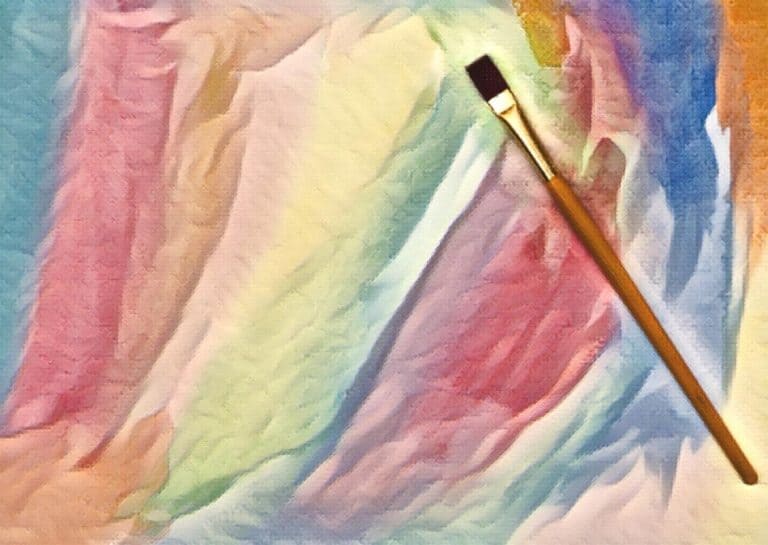Today, we’re discussing Deep Creativity: Seven Ways to Spark Your Creative Spirit by doctors Deborah Anne Quibell, Jennifer Leigh Selig, and Dennis Patrick Slattery. In this book, the authors use psychology and practical examples to explain how we’re all creative on a deep level, offering seven ways we can cultivate the spirit of creativity within us.
Table of contents
What is deep creativity?
The authors explain the concept of deep creativity as the creative process happening below the surface of our consciousness. Our subconscious minds are constantly at work, influencing our lives and understanding in ways we’re unaware of. And that subconscious level is continuously creative, being the source of things like dreams and moods. The authors believe that inherent creativity should be celebrated and cultivated.
Love as inspiration
They wrote about seven different ways to spark your creative spirit. The first thing they bring up is love. While romantic love is commonly thought of as inspiration for many artists and the subject of a vast amount of poetry, it’s not the only form of love that can inspire creativity. As author Dr. Dennis Slattery notes, even the love of creating can serve as inspiration. Embracing how that shows up for you is a way to spark deep creativity.
Letting nature shift your perspective
Another source of creative inspiration the authors dive into is nature. Engaging with and meditating on the outside world can often inspire you in unexpected ways by offering new perspectives or imagery that can spark creative ideas. The authors extend an invitation to view the world around us for inspiration and introspection. Especially in nature, there are so many things we miss because we’re not intentionally slowing down and paying attention.
Presence, awareness, and the muse
Presence and awareness are vital to the creative process. The third point the authors bring up ties into those two qualities. Everyone’s heard of the muse, but it looks different for everyone. For one author, inspiration strikes in the early morning hours. For another, it shows up in a specific city. To cultivate creativity, you need to be aware of what acts as your muse and fit your creative practice around it.
Creativity as a source of healing
Love and nature are very common muses. Something else the authors mention is suffering. Difficult experiences can strike a deep creative chord within the soul, making artistic expression a way to process what you’re experiencing. Suffering affects everyone in different ways, both on a conscious and unconscious level, but profound creative work has been inspired by some of the most challenging experiences in life. It can be the best teacher and a powerful way to spark a healing conversation.
Creativity really is an incredible tool. Even those who don’t necessarily feel like they fit the definition of being creative have an opportunity to find fulfillment or healing through creativity.
How to enjoy the benefits of being creative
A great way to start is by fostering a healthy relationship with your creative impulse. If you ignore the urge to create something, the feeling will show up less and less. So, if inspiration strikes and you listen to it, your relationship with creativity will begin to grow and thrive. Of course, you can’t control the creative impulse.
Even if you’ve leaned into those moments of inspiration, something the authors call creative resistance can still happen. If you feel blocked, taking time to reflect and gain new ideas through something like reading can offer a different perspective on your creative work and lead to fresh inspiration.
Ultimately, creative inspiration will look different for everyone, even changing from season to season. The authors offer the encouragement that it’s all part of the broader creative process, and those experiences will feed into the work you end up creating.
Why being creative matters
The authors stress that creativity is a gift, and it’s a gift within each of us. Cultivating that inherent deep creativity gives people the tools to express themselves in different methods and offers an opportunity to process emotions and experiences in healing ways. When you honor the creative impulse and create art of any kind, it’s also empowering others to do the same.
The term ekphrasis essentially means a work of art inspired by another work of art. Creativity is a cycle that continues to give if it’s allowed an outlet. Being creative isn’t selfish or meaningless. It’s an opportunity to relate to others on a deeper level and understand your own experiences and emotions better, all while inspiring others to honor their deep creativity.
Final takeaways
I think the authors did a great job conveying the significance of creativity in our lives. While the creative impulse may not feel unnatural to lean into for everyone, if it’s acknowledged as a sacred and inherent gift you shouldn’t ignore, anyone can be surprised at how it grows and inspires themselves and others. And it’s not something that has to be linked to any financial compensation. Creating can be done for creation’s sake, taking on deeper personal meaning than a source of income or tied back to crossing off a to-do list.
So, take some time to express that creative instinct through words, photography, art, or whatever sparks your curiosity. Your subconscious mind will thank you.
Not only does everyone have the ability to be creative, but it’s worthwhile to cultivate that spark as a way to learn about ourselves and the world around us.

